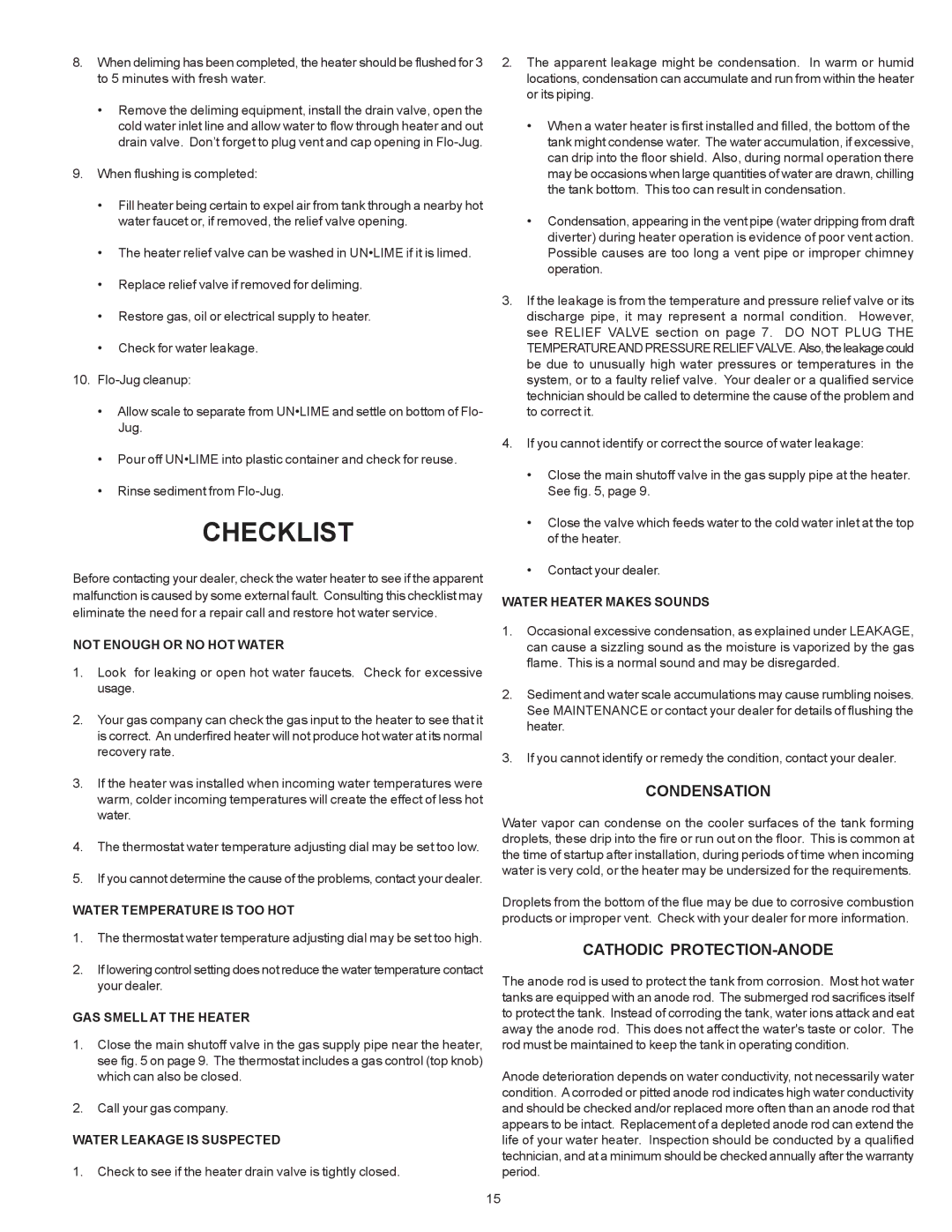BTI-80 specifications
The A.O. Smith BTI-80 is a notable contender in the residential water heater market, renowned for its reliable performance, energy efficiency, and innovative features. Designed with the modern homeowner in mind, this model stands out due to its ability to provide ample hot water while minimizing energy consumption, making it an excellent choice for a variety of home sizes and needs.At its core, the BTI-80 is a 80-gallon capacity tank water heater, catering to households with higher hot water demand. This large capacity ensures that families can comfortably enjoy long showers, run multiple appliances simultaneously, and meet their everyday hot water requirements without experiencing a dip in temperature. The tank's size makes it particularly suitable for larger families or homes with multiple bathrooms.
One of the most significant advancements in the BTI-80 is its state-of-the-art insulation technology. With its high-density foam insulation, this water heater retains heat more effectively, reducing standby heat loss and ensuring that the water remains hot for longer periods. This efficiency translates directly into savings on energy bills, offering an environmentally friendly solution without compromising performance.
The BTI-80 is equipped with a robust and reliable burner system. The gas burner operates efficiently, designed to heat water quickly while still adhering to safety and environmental standards. Additionally, the unit features a self-diagnostic control system that continuously monitors the operational efficiency of the heater. This technology not only contributes to enhanced safety by flagging potential issues but also allows for preventative maintenance, improving the lifespan of the unit.
Another standout characteristic of the A.O. Smith BTI-80 is its user-friendly interface. With accessible temperature controls and easy-to-read indicators, homeowners can easily adjust settings according to their preferences without any hassle.
Moreover, A.O. Smith’s commitment to quality is evident in the warranty that accompanies the BTI-80. The unit is often backed by a generous warranty period, underscoring the company's confidence in its product's durability and performance.
In conclusion, the A.O. Smith BTI-80 is an exceptional water heater that combines capacity, efficiency, and advanced technology. It is designed for homeowners who prioritize both comfort and sustainability, providing a reliable hot water solution that meets the demands of modern living. With its sophisticated features and consumer-friendly design, the BTI-80 is undoubtedly a top choice in the residential market.
